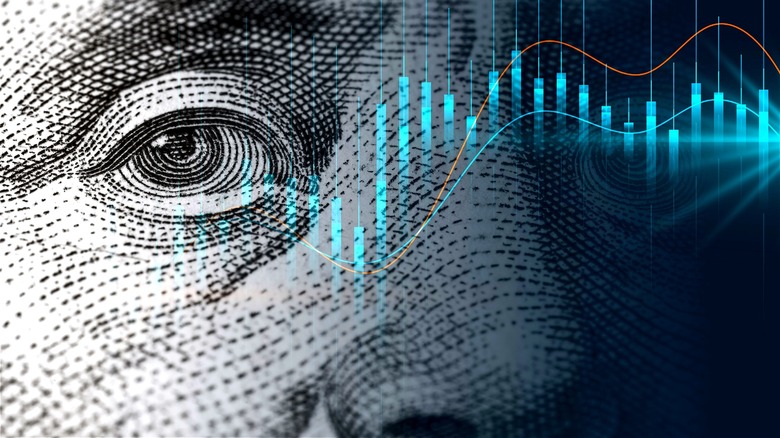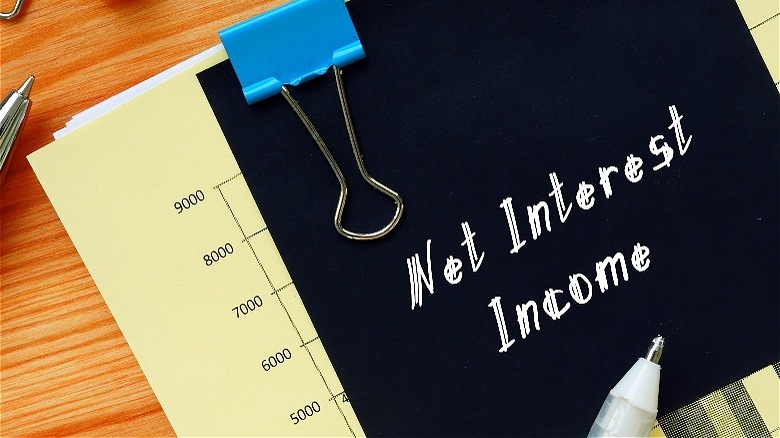How Interest Rate Changes Affect Banks In The US
There has been a lot of discussion surrounding interest rates since the Federal Reserve first began hiking rates in March 2022. These raised rates have increasingly made monthly mortgage and car payments too high for many consumers to afford. This has led not just to an increase in household debt (which hit $17.69 trillion in early 2024), but also an increase in credit card debt delinquency across the country. However, while consumers are largely taking the brunt of the Fed's strategy (for instance, even a 1% difference in your mortgage can change your homeownership chances), you might not realize how much interest rates are also affecting banks.
Yet, unlike consumers, who are financially struggling, U.S. banks are currently reaping significant profits. In order to understand bank profitability, it's important to understand net interest income, or NII. NII is essentially the difference between what a lender earns on a loan (aka its interest-bearing assets) compared to what a lender pays out for deposits (aka interest-bearing liabilities). When the interest rates are high, as they've been since 2022, banks make more money from their NII by taking advantage of the larger spread between the interest they offer customers and the profits earned from their investing.
As an example, if a bank is paying customers $10 million in annual interest, but earning $20 million on the interest from those accounts, increasing the federal funds interest rate by just a few percentage points can ensure the bank now earns $40 million on those customer accounts — all while still only paying out its customers the original $10 million.
Understanding NII
To start, a bank's assets typically come from things like mortgages, securities, and auto, personal, and commercial real estate loans. Meanwhile, a bank's main liability is its customer deposits. When the interest earned on a bank's assets exceeds the interest paid on its liabilities, the excess revenue is known as NII. NII is a fundamental part of banking in that it is the main income source that sustains lenders like banks and credit unions. NII essentially determines a lender's ability to do everything from generating revenue to extending credit.
However, there's a balancing act between interest rates and profitability for banks. When interest rates are low, businesses and consumers are far more likely to borrow money, which means a lender will have more demand for loans (and therefore more opportunities to earn returns on those loans). This said, just how much interest income a bank earns on those loans will be less than it would be during a high-interest rate period.
On the flip side, if interest rates are too high, it can discourage borrowing altogether, meaning a lender won't be able to earn interest income due to generally low demand for loans. With that said, the interest income from loans during high-interest rate periods (like today) is extremely profitable for banks, so long as borrowing continues and doesn't peter out (i.e., rates don't continue to climb). An example would be JPMorgan Chase. Its NII, as reported by Reuters, was up 11% in the first quarter of 2024, while the company estimated net interest income to reach $89 billion for the year.
2024 banking environment
However, despite the increased profitability of lenders since 2022, the future of that profitability is less clear. For starters, the ongoing uncertainty surrounding the trajectory of interest rates has made it difficult for many banks to project their earnings accurately.
Despite the Federal Open Market Committee (the group driving interest rates) initially hinting at multiple rate cuts in 2024, it's becoming less likely the U.S. will see any interest rate cuts. Multiple large banks have even reported lower profits than they enjoyed for most of 2023, perhaps signaling consumers could be reaching their tipping point when it comes to borrowing. Wells Fargo's finance chief Michael Santomassimo said to Reuters, "It's certainly challenging these days to forecast NII, given all of the volatility that we've seen across a lot of the different data points, as well as some of the uncertainty that's out there relative to how our clients are going to behave."
While banks might lament the lowering of their significant profits, it's important to remember that these interest rates are in place to try and not only tamp down on the post-pandemic inflation that raised prices across the country but also to try and stave off a recession. However, the longer interest rates remain high the higher likelihood of other economic markers being negatively impacted. From consumer spending to unemployment rates, a lot can be (and currently is) affected by interest rates and inflation, so it remains to be seen if the country will manage to achieve a soft landing or face another potential recession.


